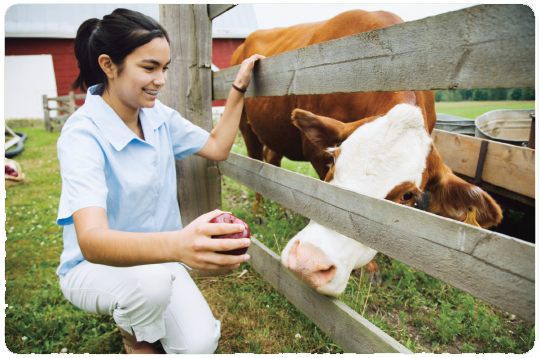Emergency Planning for Pets and Livestock

If you own pets or livestock, it's important to include them in your emergency planning. As you begin to think about disaster preparedness for your pets, keep in mind that what's best for you is usually what's best for your animals.
If you evacuate your home, DO NOT leave your pets behind. However, because many public shelters will not allow animals inside, you should plan in advance for shelter alternatives that will work for both you and your pets.
Below are some guidelines to help you prepare to meet the needs of pets and livestock in the event of a disaster.
Emergency Planning for your Pets
- Include pet food, bottled water, medications, veterinary records, a cat litter/pan, a can opener, food dishes, a first aid kit, and other supplies in your emergency kit.
- Talk to your veterinarian about evacuation and emergency care for your animals.
- Develop a buddy system with neighbors, friends, and relatives to make sure that someone is available to care for or evacuate your pets if you are unable to do so.
- For public health reasons, many emergency shelters cannot accept pets. As you prepare your emergency plan, identify an emergency animal shelter location in your area (kennels, adjoining farms, state and local fairgrounds, Pennsylvania State Animal Response Team (PASART), County Animal Response Team (CART), etc).
- Know which hotels will accept pets.
- Have a portable crate available for cats or small dogs and a leash available for larger dogs.
- Keep all vaccinations current.
- Make sure identification tags are up to date and securely fastened to your pet's collar. If possible, attach the address and/or phone number of your evacuation site. Consider microchips and/or tattoos as permanent identification.
- Have a copy of medical records and a list of necessary medications on hand.
- If you must leave animals behind, post a highly visible sign—above any anticipated flood water (either on a window or a door) letting rescue workers know the type and number of animals which remain. Leave plenty of food and water with care instructions. Keep the animals contained in the safest place in your home for the type of emergency you are experiencing.
Here is a pet and service animal preparedness checklist (PDF) that can help you with your emergency plans.
Emergency Planning for your Livestock
- Prepare an evacuation plan for livestock. Your plan should include a list of resources such as trucks, trailers, pasture, and/or feed which might be needed in an evacuation, as well as a designated person who will unlock gates and doors and make your facility easily accessible to emergency personnel.
- Have halters and lead straps available.
- Have a copy of medical records and a list of necessary medications on hand.
- If you must leave animals behind, post a highly visible sign (either on a window or a door) letting rescue workers know the type and number of animals which remain. Leave plenty of food and water with care instructions.
Learn More
Ready.gov provides more information about emergency planning for pets and livestock.